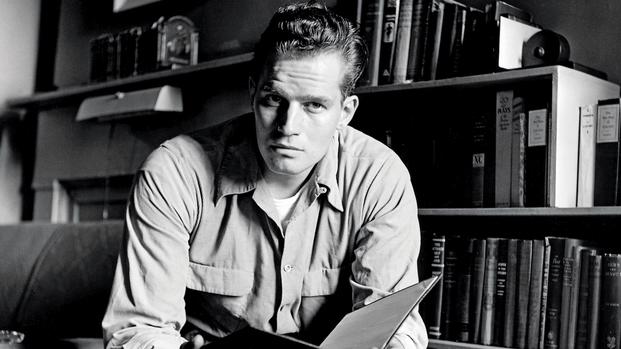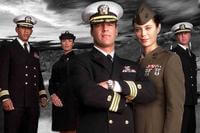Best known in his later years as president of the NRA, Charlton Heston had a long career as one of Hollywood's greatest leading men. Marc Eliot's new biography Charlton Heston: Hollywood’s Last Icon details the actor's service in World War II, when he saw action in the Pacific as a radioman aboard dozens of flight missions. Below, we've got an excerpt from the book detailing Heston's service in the Army Air Forces.
Heston won a Best Actor Oscar for his role in the best film version of Ben-Hur and starred as Moses in Cecil B. DeMille's epic The Ten Commandments. He enjoyed a middle-aged career revival in the sci-fi classics Planet of the Apes, The Omega Man and Soylent Green. He became more conservative as he aged and was a big supporter of Richard Nixon and Ronald Reagan. His "cold, dead hands" speech became a rallying cry for supporters of the Second Amendment.
Heston's family allowed Marc Eliot complete access to the actor’s personal diaries, private papers and letters. He's previously written highly regarded biographies of Cary Grant, Clint Eastwood, Walt Disney, Steve McQueen, and John Wayne and the most clear-eyed account of Bruce Springsteen's early career.

From the book CHARLTON HESTON: Hollywood’s Last Icon by Marc Eliot. Copyright © 2017 by Rebel Road Inc. On sale March 14 from Dey Street Books, an imprint of HarperCollins Publishers. Reprinted by permission.
In 1942, the Japanese had invaded the islands of Kiska and Attu in the Rat and Near group of the Aleutians off the western coast of Alaska. It took the Allies more than two years to drive them out. The American commanders knew the Japanese were planning a new offensive and had sufficient air power ready to defend against it.
Heston was assigned to the Seventy-Seventh Bombardment Squadron of the Eleventh Air Force, stationed on an island in the Aleutian chain, where he was trained as a radio gunner and, for the next two years, flew several B-25 combat missions over the Kuril Islands of northern Japan. His assignment was to man one of the waist guns that radiomen like him usually handled as the second gunner. The extreme weather they had to fly through, with no visibility and limited radar, was as dangerous as enemy aircraft. Radiomen were the only connections pilots had to their landing strips, and their primary role was to help guide the planes safely down.
In whatever spare time he had, which was not much, Heston plotted a world map and had it sent through the proper channels to Lydia. He was not able to tell her exactly where he was, but he had left a secret code with her before they’d separated. He told her to read his letters that quoted Shakespeare, and then look up the quote to find the act and the scene it was from. Those numbers would be the coordinates of where he was on the map.
Late in 1944 word filtered through the base the coming all-out invasion of Japan would surely cost at least a half million American GI lives. Heston was sure he was going to be part of that grand assault. The army would be sending every available soldier it had to Tokyo. A grim silence engulfed the base as the men waited, on edge. One day, not long after, an army plane returning from a mission got caught in a crosswind and crashed onto the island. As Heston and others ran to help get the pilots out of their cockpits, he slipped on a patch of ice and was run over by an ambulance. He was taken along with the pilots to the base medical center. When he had recovered enough to travel, he was sent to Elmendorf Field in nearby Anchorage, Alaska. Still in a wheelchair, he was assigned to the base control tower, convinced that if he was well enough to handle this, he should be considered well enough to be part of the invasion despite his injury.
And then, without warning, in August 1945 the United States dropped two atomic bombs on Japan, one at Hiroshima and one at Nagasaki, and the war in the Pacific was over. There wasn’t an American soldier anywhere who didn’t celebrate the decision to use nuclear weapons on the enemy, including Heston, who believed the bombs saved the lives of those half million GIs, including his own. “If we had to go through that invasion, I’m not sure I’d be standing here today,” he said later.
A few weeks after the Japanese officially surrendered, a still-limping Heston was transferred to Great Falls, Montana, where he was given a formal discharge. In March 1946, the twenty-three-year-old veteran was once more a civilian. He wasted no time heading back to Evanston and to Lydia, who greeted him at the train station with open arms, tears of happiness streaming down her face.




